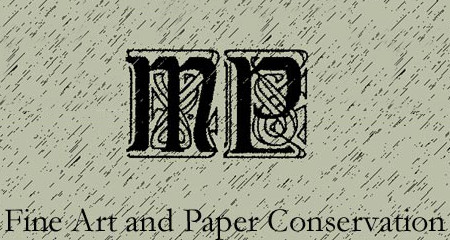Google Search
Introduction to Accounting Basics
This will explain some basic accounting principles, accounting concepts, and accounting terms for you. Once you are familiar with these terms and concepts, you can easily browse the instructions, quizzes, puzzles, and other features.
Some of the basic accounting terms you will learn to include: expenses, assets, liabilities, income statement, balance sheet, and cash flow statement. When we show you how to record transactions, you will be familiar with accounting debits and credits. You will also see why two basic accounting principles, the revenue recognition principle and the matching principle, ensure that the company’s income statement reports the company’s profitability.
In this explanation of accounting basis and all free materials and PRO materials, we often omit some accounting details and complexity in order to provide a clear and concise explanation. This means that you should always seek professional advice for your specific situation
Stories about accounting basics
We will introduce the basics of accounting through the story of a person who started a new business. This person is Joe Perez. He is a savvy person. He saw in the community that he needed a package delivery service. Joe found my idea and prepared a business plan to record the feasibility of his new business.
Joe also met with a lawyer to discuss the business form he should use. In view of his specific circumstances, they believe that a company will be the best. Joe decides that the name of his company will be Direct Delivery Company. The lawyer also provided Joe with the permit and government ID number required by the new company.
Joe is a hardworking and smart person but admits that accounting is uncomfortable. He uses some accounting software but wants to meet with a professional accountant before making a choice. He asked his banker to recommend a professional accountant, and he also expertly explained accounting to people without an accounting background. Joe wants to understand the financial statements and hopes to continue Expert Assignment Writer to maintain new business. His banker suggested Marilyn, an accountant, who has many small business clients of banks.
In the first meeting with Marilyn, Joe asked her to outline the needs of accounting, financial statements, and accounting software. According to Joe's business plan, Marilyn believes that there may be thousands of transactions each year. Electronic records, storage, and retrieval of these many transactions will be allowed. The accounting software will allow Joe to generate the financial statements and other reports he needs to run his business.
- Joe seemed to be confused by the term transaction, so Marilyn gave him five examples of transactions that direct delivery companies need to record:
- Joe will undoubtedly start a business by incorporating some of his personal funds into it. In fact, he is buying shares of common stock.
- Direct delivery will require the purchase of sturdy and reliable transportation vehicles.
- The business will begin to collect fees and settle customer delivery packages.
- The business will charge the earned fees.
- The business will bear expenses in terms of operating the business, such as Joe's salary, expenses related to the delivery vehicle, advertising, etc.
With thousands of such transactions in a year, Joe started using accounting software smartly from the beginning. The accounting software will generate sales invoices and accounting entries at the same time, prepare reports for customers, without additional work, write checks, automatically update accounting records, etc.
Through the habit of integrating all of the business transactions of the day into his computer, Joe will get quick and easy access to the specific information he will need to make correct business decisions. Marilyn tells Joe that the "transaction method" of accounting is useful, reliable, and informative. She works with other small business owners and believes that as long as they "know", their company has made $30,000 in this year (only based on the fact that it has $30,000 since January 1). Those who started in the wrong footsteps ended up looking for financial advice in Marilyn's office.
If Joe directs all Direct Delivery transactions to his computer, good accounting software will allow Joe to click a button to print out his financial statements. In parts 2 to 7, Marilyn will explain the content and purpose of the three major financial statements:
Proof of income
Balance sheet
Cash flow statement
The accrual principle is the concept of recording accounting transactions during the actual accounting period, not during the period of cash flow related to it. This is the basis of the accrual system of accounting. The construction of important financial statements shows transactions during the accounting period, rather than being artificially delayed or accelerated by related cash flows. For example, if you ignore the principle of accrual, you only need to record the expenses when you pay them, and we expect a long delay caused by the payment terms of the relevant supplier’s invoice.
The principle of conservatism, you should record expenses and liabilities as soon as possible, but only when you are sure that income and assets will occur, you can record income and assets. The conservative tilt of the financial statements may lead to a decline in reported profits, because the recognition of income and assets may be delayed for a period of time. On the contrary, this kind of material tends to make the difference between people before and not later. This concept may have been taken too far, and companies have always mistaken the results for more than they actually are.
The principle of consistency, once you adopt an accounting principle or method, you should continue to use it until a better principle or method is derived. Not the following principle of consistency means that an enterprise can continuously jump its transactions between different arithmetic processes, making its long-term financial results very difficult to discern.
This principle is not efficient because the main body of accounting standards is adjusting the direction of assets and liabilities. Take fair values.
This is the concept of transactions that should be stored separately from the owner and other businesses. This will be a mixture of assets and liabilities between multiple entities. When the financial statements of the preliminary audit business are first audited, it may lead to deterioration difficulties.
Principle of full disclosure. This is the concept that you should list all the information that may affect readers’ understanding of these financial statements in or next to the business financial statements. Information disclosure
The principle of concern is the concept that a company will continue to operate in the foreseeable future. This means that you will have reasons to postpone the recognition of some expenses, such as depreciation, until later. Otherwise, you must acknowledge all expenses at once without delaying any expenses.

























https://www.lucknowescorts.club/